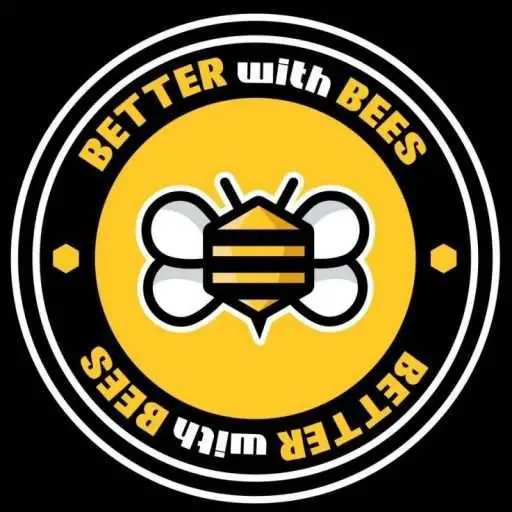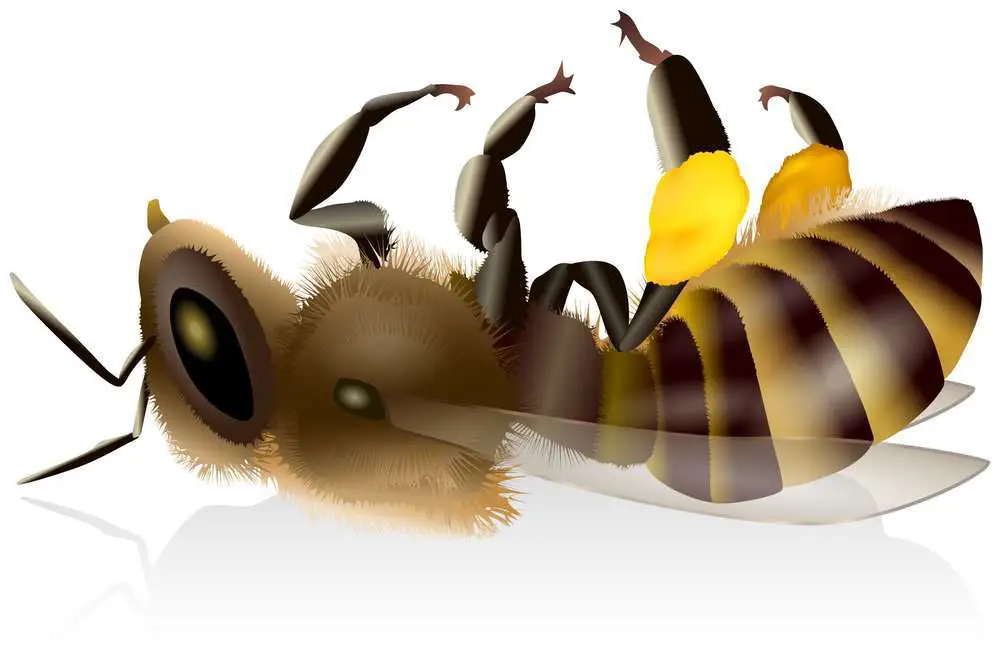Varroa mites are very dangerous to the health of your bees and are the number one reason that bee colonies die throughout the world, so this makes it very clear that they need to be controlled and eliminated to ensure your bee colony remains safe and productive.
Experienced beekeepers will be well aware of honey bee mites in general, and any beginner beekeepers first starting out in this exciting hobby will quickly find out that mites are an ever-present problem. When it comes to controlling these mites, you need to fully understand the issue and the problems you face, in order to form a successful plan to keep these pests at bay.
If you don’t, then these mites will run wild and destroy all of your honey bees hard work! But don’t you worry too much, we are here to help you take control of your hives and show you how to treat varroa mites.
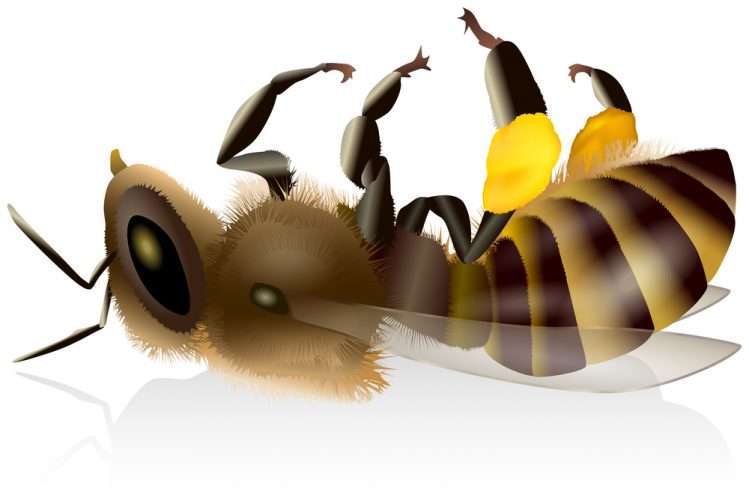
Best Varroa Mite Treatments
With all of this mind, we now have a good idea of what we are up against and what we need to do to win the battle against the mites.
We’ve taken the time to look through multiple options and we’ve picked out the best bee mite treatment on the market at the moment, so why not take a look and see which one best fits your hive setup.
Our Top Pick and Budget Pick at the bottom of the list is always a good choice if you can’t quite make a final decision!
Varomorus – Oxalic Acid Vaporizer
Pros
- Electric based for easy application
- Creates a healthy environment for your hive
- Durable aluminum material
- 55” power cord
- 2-3 minute heating time
Cons
- Might be too thick to slide through some hive entrances
Summary
The vaporizer from Varomorus is a popular mite treatment option, it delivers a combination of benefits that create a healthy environment for your hive and also helps to remove the mites at the same time.
It’s a perfect tool to be used during the months of Autumn and Winter and shows that this vaporizer can be very effective when used alongside other treatments.
It’s portable and compact and runs on a 40-watt power source or 12-volt. The ease of use is what makes this a great option for both beginners and professionals.
MITEAWAY – Mite Away Quick Strips
Pros
- Proven to kill up to 95% of varroa mites
- Formic acid and plant-based gel
- Safe for your honey bees with no harmful residue
- Thin design to get in between spaces in the hive
Cons
- One pack only treats two hives so multiple packs will be required for some beekeepers
Summary
The Mite Away Quick Strips are a great choice because they are so easy to use and last for up to seven days on each application, you can then remove or leave them in until a later date.
The key with these strips is that they contain formic acid, a perfect ingredient to use on capped broods during the summer months. It leaves no harmful residue so you can relax and be sure that your honey bees will be safe when using this treatment.
The thin design allows you to apply these strips into the smaller spaces of the hive, giving you a greater cover of treatment to remove as many varroa mites as possible.
The price is reasonable but will quickly add up if you are working with many hives, but overall, an effective treatment that will remove the majority of those pesky varroa mites.
OxaVap – Varrox Oxalic Acid Vaporizer
Pros
- Heavy duty vaporizer
- Stainless steel for controlled heat transfer
- A proven method of killing varroa mites
- Side wings to keep the vaporizer steady during application
- Vaporization is complete in 2-3 minutes
Cons
- The price tag is higher than average
Summary
A heavy duty option from OxaVap, a highly recommended vaporizer that will make an excellent job of removing varroa mites from your hive. It’s made of stainless steel to control the heat transfer and prevents the oxalic acid from overheating, which makes the whole process much more efficient.
The side wings come as a nice design that helps to keep the vaporizer up in the correct position and the whole process of vaporizing one hive with the oxalic acid is completed within 2-3 minutes.
It is worth noting that oxalic acid only kills those varroa mites that are physically located on the honey bees themselves, not within the brood.
As most hives are without broods over the Autumn and Winter months, this makes it a great time to treat and remove the varroa mites, making sure the outside temperature is at least above 40 degrees Fahrenheit.
The price tag is quite expensive but as it is made from durable materials, it should last you many years, whereas you will need to keep repurchasing other treatments year on year. We think that the price difference will soon balance out!
Scott Bee Farm – Heavy Duty Oxalic Acid Vaporizer
Pros
- Easy to use
- Simple and effective treatment
- Aluminum tubing to protect the cable
- It includes a stabilization tray
- Heat shield for optimal heat transfer
- Extra accessories – digital timer and measuring scoop
Cons
- Expensive compared to other vaporizers
Summary
You definitely get what you pay for when it comes to the Scott Bee Farm vaporizer, a heavy duty tool that will last you many beekeeping seasons due to the quality materials used.
The vaporizer is a simple tool to use and is very effective for removing those varroa mites, so we certainly recommend this option for those who can afford the higher price tag. It comes with all of the features of a well-made vaporizer and the extra digital timer and measuring scoop is a nice little bonus as well!
All in all, the Scott Bee Farm oxalic acid vaporizer is worth the money when you think of the many years it will last you.
Oxalic Acid Vaporizer DIY Kit
Pros
- Easy to use and simple treatment
- Effective application for removing varroa mites
- Aluminum tubing to protect the cable
- Effective heat transfer
- Extra accessories – oxalic acid samples that should last around 50 separate treatments, safety goggles, measuring scoop, gloves, 3m n95 mask, and an instructional guide
Cons
- The initial cost is expensive but the product should last for several years
Summary
This DIY vaporizer kit is an excellent option for any beginner beekeepers out there. It comes with everything that you need to get started with your varroa mite treatment plan, including samples of oxalic acid that will last you for around 50 treatments (this is a great bonus as other products force you to buy the acid samples separately).
Vaporizing with oxalic acid has been proven to be an effective form of treatment, and with this option you are getting a well-made piece of equipment to combat the level of mites in your hive.
The price tag is higher than average but with all of the included extras and the fact that this should last you for several seasons, it will work out as good value for money in the end!
Mann Lake DC301 Hop Guard
Pros
- A natural treatment made from hop compounds
- No known negative effects on your queens or overall hive activity
- Treatment can be applied up to three times a year
- Can be used when honey supers are on the hive
- 24 strips per package (one strip per five frames)
Cons
- Can be messy to work with
Summary
The Mann Lake hop guard is one of the better natural treatments you can buy at the moment, made from hop compounds that assure safety to your hive and queen.
The beekeeping company, Mann Lake, recommends using this treatment at temperatures over 50 degrees Fahrenheit for optimal performance.
As the treatment should be applied up to three times a year, this provides excellent value for money with the current price tag. The Mann Lake hop guard strips are a worthy option for those who are looking for natural treatment products.
Our Top Pick – Mann Lake – DC-799 Apivar
Pros
- Can kill up to 99% of mites in one application
- Amitraz continuously released over a period of six weeks
- Strips are proven to be safe and effective
- No significant residue is left in the hive
- Recommended to use one strip for every five frames
Cons
- All ten strips are in one packet so try and only buy what you need to maximize the life of each strip
Summary
A proven product from the established Mann Lake company, they are passionate about beekeeping so you know that you are buying quality goods. The Apivar strips are the most effective chemically based treatment products on the market, proving to kill up to 99% of mites in one application over five weeks.
The strips leave no residue and your honey bees health is at no risk with this type of treatment.
The Amitraz is released over a period of around 5-6 weeks whenever the bees come into contact with the strip, so it provides excellent protection for an extended amount of time, and for the price you pay, it works out to be a very cost-effective deal that helps to make it our Top Pick and best treatment for varroa mites.
Our Budget Pick – Blythewood Bee Company – Apiguard Pack
Pros
- Treatment removes multiple species of mites
- Non-toxic and natural gel
- The active ingredient of 25% Thymol helps to create a kill rate of up to 95%
- Safe for your bee colony
- Proven and reliable treatment
Cons
- Effective treatment requires multiple packs so the cost will increase quickly
Treating for Varroa Mites
A superb treatment option from the Blythewood Bee Company, proven to be very effective against varroa mites and also tracheal and chalkboard mites as well. With a guaranteed kill rate of up to 95%, you’ll be able to eliminate the majority of the mites and restore a healthy hive environment in no time at all.
The active ingredient, Thymol, is a natural essential oil that ensures your honey bee colonies safety, making the Apiguard product an ideal choice for mite treatment.
You are getting great value for money and that is why this is our Budget Pick option, you should definitely consider this for when you are planning your future mite treatment.
Your average beehive will likely house several different types of mites, but only some of these will cause you and your bees severe problems. The more experienced beekeepers might remember a big issue with tracheal mites a few years ago, resulting in huge losses for many beekeepers worldwide.
These mites are still around but it’s the varroa that are keeping all beekeepers on high-alert for their unwanted presence, so we’re here to offer all of the information required to keep you and your bees safe.
Varroa Mite Infestations
Varroa mite infestations can be detected on the body surface of your bees, they are known to feed on the blood and cause parasitism, which basically means that your bees will live shorter lives and not be as productive outside and inside the hive.
The mites that you can’t see, the ones that many beginners are unaware of, cause the most damage to your colonies because they feed on the young bees in the cells of the bee larva, deforming the baby bees and also spreading viruses throughout the hive.
It doesn’t take a scientist to realize that this can quickly wipe out your bee colony and leave you with nothing!
In all honesty, it’s an ongoing battle that has no exact science in preventing these mites from causing havoc in your hive. There are, however, certain methods that work better than others and we’ll be looking into them and picking out the options that will give you the best chance of success in fighting these mites.
Overall, it’s a case of forming a plan that works for you and sticking to it, with the hope of keeping the number of mites in your hive as low as possible.
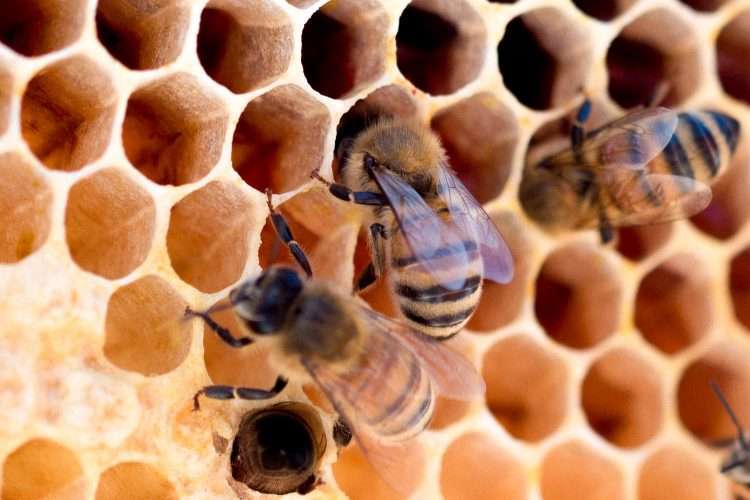
When To Start Varroa Mite Treatment?
Firstly, we want to confirm again that varroa mites are likely to be present in your beehives, that’s just a natural fact that we must accept, even if they are such a big threat to our beloved bees.
The threat only comes true when the level of mites get too high, your bee colony can cope with a small number of mites, so it’s our job to keep this level low before persuing varroa mite treatment. Aiming for 0% mites is a very big ask and something that might drive you crazy in the long run, just remember that you are trying to keep the level low.
It’s when you start to notice a varroa mite infestation, this would be a clear sign that you have to start and take action to reduce the growing varroa mite populations quickly.
Determining the level of mites is really something that each beekeeper needs to work out for themselves, However, there are some rough guides and things to look out for, for example, bees with deformed wings is a big sign of varroa mite infestations, and bees struggling to fly in and out of the hive is another sign.
You can use the following method to roughly estimate the level of mites in your hive, take a sample of your hive and count the number of mites and divide it by the number of bees, then multiply by 100 to get your percentage.
So, for example, 10 mites with 500 bees would give you roughly a 2% infestation. It is widely suggested that if your infestation is between 2-5% then some action needs to be taken against the mites. Anything over 5% shows a definite sign to start treatment straight away before your varroa mite infestations get out of hand.
Treatment Tips and Useful Information
There are four types of methods to choose from for controlling varroa mites, the first three are physical, behavioral and mechanical. These methods are not enough to be used on their own but can help in the fight against the varroa mite infestations, here are some of the more popular choices:
- Screened bottom boards (instead of solid so mites can fall to the floor)
- Drone-brood trapping where mites are enticed to a certain area of the hive
- Dusting bees with sugar or talc (mites are more likely to slip off the back of bees)
The last method is chemical and has been proved to remove the majority of the mites from your hive. This chemical method is, of course, the most popular as it tends to be the most effective.
You can choose from synthetic or naturally occurring chemicals, they have all been proven to work but using them incorrectly could result in mite resistance, so you must learn how to apply them in the correct manner.
Chemical – Synthetic Form
- Pyrethroid insecticide in strips
- Organophosphate insecticide in strips
- Manley’s Thymol Crystal as food
Chemical – Natural Form
- Formic Acid as vapor or pads
- Powdered Sugar (sprinkled on bees)
- Essential Oils (mint, lemon, thyme)
- Sugar Esters
- Oxalic Acid as vapor
- Mineral Oil as vapor or direct application
- Natural Hops in strips
The big idea to remember here is not to wait until you start noticing these little red mites inside of your hives, for some this will be too late and your colony might already be jeopardized, so it’s best to take action early and keep the level of mites in your hive as low as possible. The earlier you start, the more chance you have of beating these little critters!
We’ve provided some more information on the different chemicals used in these varroa mite treatments, the more knowledge you have, the better decision you can make when creating your treatment plan.
Oxalic Acid
Oxalic acid (scientifically known as Oxalic acid dihydrate, or organic acid) can be used in two different ways to control varroa mites – one as a drizzle or the other as a fumigant.
- The drizzle (or drip) method involves mixing the oxalic acid with sugar water, this mixture is then poured over your bees. Bees cluster together during Autumn/Winter time, making it an ideal time to carry out the drizzle treatment. It is recommended to only use the drizzle method twice a year as the acid is corrosive to the bees bodies
- The vaporization method is a beekeeper favorite that gives great results every year, ideally used in the warmer months. You place a small amount of oxalic acid on the end of the vaporizer stick and slide this into the hive. The stick heats up to vaporize the acid crystals, and the crystals then begin to reform as the vapor starts to cool down inside the hive. The honey bee colonies then expose the crystals to the varroa mites by moving the crystals around the hive. It’s also good practice to cover your hive with a cloth for 10 minutes after treatment, this allows for maximum exposure inside the hive
Formic Acid
Formic acid can also be used as a fumigant (similar to the oxalic acid), however, this type of acid is capable of killing mites in capped broods whereas oxalic acid is not. This means that formic acid is perfect for treating your hives and being effective during the warmer months of the year.
Some beekeepers have experienced queen loss and reduced brood production after formic acid treatment, so you should work carefully and not overuse the acid to begin with.
Apistan (fluvalinate)
Apistan is a substance that has been used for many years to control mites, it is applied as strips that have been chemically treated and kills the mites on contact.
However, there have been reports of chemical residue in the wax, so do be careful if you use this. There are many other alternatives that work better so we recommend staying away from this if possible.
Apivar (amitraz)
A synthetic miticide that is widely used to kill mites on contact. Placing strips near the brood is advised but using honey supers is restricted for at least two weeks after the treatment.
Some reports have shown low levels of chemical residue on the wax and honey, and the mites have been known to develop resistance to this chemical. However, on the whole, Apivar has provided quick and effective results for many beekeepers.
Apiguard
Apiguard acts a fumigant that has shown effective results when killing off mites, it comes as a gel that contains the natural oil, Thymol.
However, being a natural treatment means that this option is temperature sensitive, only to be used in temperatures between 59-105 Fahrenheit.
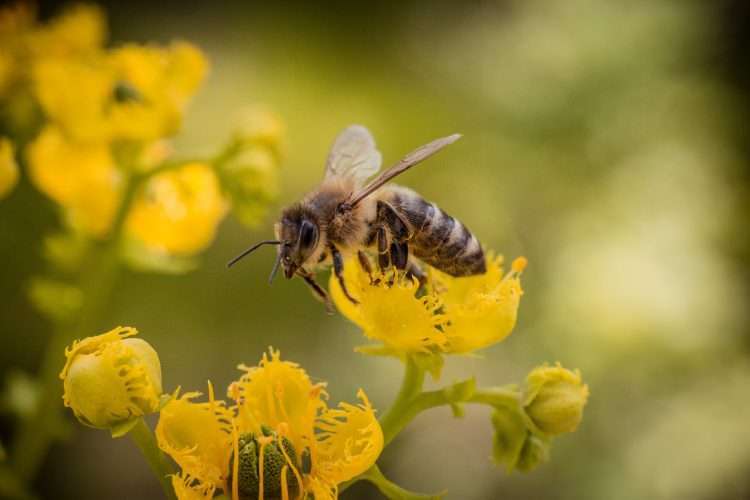
Final Words For Varroa Mite Treatment
Varroa mites are a big pain but if you understand how to use the various treatments and form a plan throughout the beekeeping season, then you will be able to keep them under control. You need to be proactive when fighting against these critters and often people leave it until it’s too late.
Hopefully, we’ve given you enough information for you to form your own treatment plan, it can start to get quite costly if you manage multiple hives so make sure to do the calculations and find the right treatment choice for your setup.
If you are unsure about using any of the chemicals then seek advice with a local professional or any other experienced beekeeper in your area.
But for now, until someone finds a definitive treatment, it’s going to be a case of carrying on with the recommended treatment options, that have proven to remove the majority of mites, and remember, stick to the plan and keep those little beasts at bay! Good luck!
